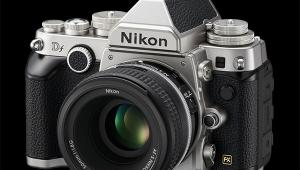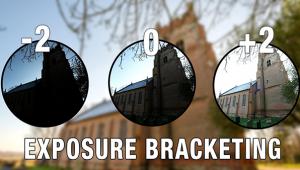Pro Shooters: Our Favorite DSLRs For Sports, Action and Photojournalism

While compiling a list of my favorite professional DSLRs two things came to my mind: At this point in the 21st century, why are they still called DSLRs and not simply SLRs? Canon’s top-of-the-line, film-based EOS-1v was introduced in 2000 and is long gone. Nikon’s F6 ($2,399) was launched in 2004, and although you can still buy one, not many people do. To me it’s like calling automobiles “horseless carriages” and since I don’t think a Nikon F7 is around the corner, let’s put this abbreviation to bed.
Then there’s the whole “pro” thing: Reasons why a camera is considered professional have always been arbitrary. Is it based on what a camera costs? Or how many megapixels it captures? An 18.1-megapixel EOS-1D X costs $5,299, while an 18.1-megapixel EOS Rebel T5 kit is $399. What happens when a pro makes a great photograph using a Rebel T5? The designation seems arbitrary, so I’ll be equally arbitrary. If you’re a pro and use something different than what follows let me know via the contact page on www.joefarace.com.

Full-Frame SLRs
For many, a professional-level SLR should be able to capture high-quality images with its 24x36mm imaging chip. In 1913, Oskar Barnack designed the first 35mm Leica and used 35mm motion picture film, settling on that format with a 3:2 aspect ratio. Yet early Nikon, Minolta, and other Japanese rangefinder cameras adopted 24x32mm before switching to 24x36mm. And don’t even get me started on the half-frame (18x24mm) Olympus Pen F shot by W. Eugene Smith and other pros.
Nikon’s D4S ($5,996) has a 16.2-megapixel FX (23.9x36mm) sensor working with an EXPEED 4 processing engine to produce an ISO range from 100 to 25,600, expandable from 50 ISO (Lo-1) to 409,600 ISO (Hi-4). A Nikon engineer told me, “…expanded settings are just that, expanded beyond the range that is considered optimal or acceptable by our camera designers and engineers. These settings are labeled differently to indicate (they) are for emergency purposes and clearly identify where noise and color distortion will affect picture quality.” The D4S has a 51-point autofocus system with continuous capture up to 11 fps (frames per second) with autofocus and autoexposure. It has dual card slots, one CompactFlash and one XQD, for fast transfer times. The D4S can capture 1920x1080 video at variable frame rates. You can shoot at 1080 30p or a cinematic 24p, as well as other frame rates and resolutions.

Nikon calls the insanely retro Df ($2,746) an “enthusiast’s” camera and I like its love-me-or-get-out-of-here design. My wife Mary did, too, but was put off by the size and weight (1.56 pounds). By comparison, the D4S weighs a hefty 2.6 pounds. Nevertheless, the Df is a hipster’s delight, especially with the AF-S Nikkor 50mm f/1.8G Special Edition lens that recalls the heyday of Nikon film cameras. It has a selectable 39-point AF system with nine cross-type sensors and seven AF points that work down to f/8 and a burst rate of up to 5.5 fps. The Df has a 3.2-inch LCD screen for Live View capture but no video capability, something I like but others may not agree with.
Canon’s “big dog” is the 2.38-pound EOS-1D X ($5,299) with a magnesium alloy body, 3.2-inch LCD, and 18.1 megapixels of CMOS goodness. An increased photoelectric conversion rate augments the sensor’s sensitivity by two stops over previous models, meaning high ISOs up to 51,200 with lower noise. It has expanded sensitivities to 102,400 (H1) and 204,800 (H2) for “black cat in a coal mine” shots. The EOS-1D X can shoot up to 12 fps (Raw + JPEG) or up to 14 fps (JPEG). Dual CompactFlash card slots along with a Gigabit Ethernet terminal, Wireless File Transmitter, and GPS connectivity provide file sharing. It has 61-point High Density Reticular AF and iSA (Intelligent Subject Analysis System) with 252 zones for general metering and 35 zones for low light. The EOS-1D X captures HD video (1920x1080) and offers ALL-I and IPB compression. It supports H.264/MPEG-4 AVC High Profile recording up to 29:59 minutes because anything over that maximum is classified by the EU as a video recorder, adding a 5 to 12 percent customs duty. Even though it doesn’t apply, many U.S.A.-bound cameras are saddled by this rule, while others, such as Panasonic, are not.

Canon’s EOS 5D series includes two 50.6-megapixel cameras—the 5DS ($3,699) and 5DS R ($3,899). The S model has a low-pass filter, while the S R has a self-canceling filter, similar to differences between Nikon’s D800 and D800E. (A low-pass aka anti-aliasing filter eliminates moiré by blurring what reaches the sensor but extreme details are lost. Eliminating the filter lets you capture more detail but moiré is peeking around the corner. Talk to purchasers of the Leica M8 about that.)
Aimed at the I-can’t-get-enough-megapixels crowd, the magnesium alloy-bodied EOS 5DS twins, along with many Canon SLRs, offer 1080p capture at 30 fps and a Time Lapse function that takes still photos at set intervals combining them into a video clip—don’t call ’em movies. Citizen Kane is a movie; “Mr. Fluffy the cat playing a piano” on YouTube is a video clip. The EOS 5DS cameras have a 61-point High Density Reticular AF system with (up to) 41 cross-type AF points and can shoot 5 fps in continuous mode. The ISO range is 100 to 6400. It has a cropping feature that extends the shooting effect to 1.3x and 1.6x, while shooting in 1:1, 4:3, 3:2, and 16:9 aspect ratios. The anti-reflective 3.2-inch monitor has grid lines that can be displayed in nine sections, 24 sections, or nine sections with diagonals, as well as an electronic level.


APS-C Sensor SLRs
A pro-level SLR with a smaller imaging sensor offers a few advantages, including a smaller size and price tag. The so-called APS-C sensor size is (approximately) equivalent to the Advanced Photo System’s “classic” 25.1x16.7mm negatives that had an aspect ratio of 3:2. Canon’s EOS 7D Mark II, for example, has a 22.4x15mm chip and Nikon’s D5500 chip is 23.5x15.6mm. Neither is APS-C but we’ll use that term because everyone else does, often alongside the equally misleading “crop sensor.” The difference in chip size between the Big Two’s implementation of APS-C produces different multiplication ratios of 1.6x versus 1.5x.
Canon’s 20.2-megapixel EOS 7D Mark II ($1,799) has a magnesium alloy body with a shutter tested to 200,000 cycles and low-light sensitivity up to a native ISO 16,000, expandable to ISO 51,200. The camera supports 1080p video in multiple frame rates, up to 60 fps, in MOV and MP4 file formats with a capture time of 29:59. There’s a headphone jack for real-time audio monitoring with an optional external microphone. The EOS 7D Mark II has 65-point all cross-type autofocus with a fixed three-inch screen for Live View shooting via Dual Pixel CMOS AF that uses two photodiodes within each pixel to reduce focus hunting. An integrated GPS receiver records location data with each exposure, including longitude and latitude, elevation, and UTC (Coordinated Universal Time) along with a digital compass.
"There’s a headphone jack for real-time audio monitoring with an optional external microphone."

The D7200 ($1,996), much like the Df, is part of Nikon’s Enthusiasts collection but unlike that full-frame camera, this camera’s sensor measures 23.5x15.6mm. The 24.2-megapixel sensor lacks an optical low-pass filter and can record up to 6 fps at full resolution or 7 fps using a 1.3x crop with a 100-frame buffer. The AF system employs up to 51 points, with options to use nine, 21, or 51 points. It has a native ISO of 25,600 that can be expanded to a black-and-white-dedicated ISO 51,200—I like that feature—or ISO 102,400. Unlike many pro SLRs, it has a built-in flash for illumination and a flash commander to wirelessly communicate with Nikon CLS (Creative Lighting System) speedlights. The camera has dual SD card slots, permitting overflow recording or backup. Unlike the Df, it offers 1080p video up to 60 fps with a 29:59 minute limit and time-lapse shooting for up to 9,999 frames.

The Pentax K-3 II ($1,096) has a 24.35-megapixel CMOS sensor (23.5x15.6mm) that’s capable of shooting up to 8.3 fps, HD video recording, and has an ISO sensitivity range of 100 to 51,200. The magnesium alloy shell over stainless steel chassis is weather-resistant, cold proof to 14 degrees F, and sealed against dust and moisture using 92 seals. The camera has an anti-aliasing filter you can toggle on or off, providing support for high resolution or moiré protection. There are two SD memory card slots for storage. In-camera image stabilization compensates for up to 4.5 stops of camera shake and makes possible the AstroTracer capability that uses the in-camera GPS module to compensate for Earth’s rotation and to minimize star trails when photographing nighttime skies. The AF system has 27 phase-detection points, 25 of which are cross-type. A 0.95x optical viewfinder permits 100 percent viewing while a 3.2-inch LCD screen is used for live view shooting and image playback.
"The magnesium alloy shell over stainless steel chassis is weather-resistant, cold proof to 14 degrees F, and sealed against dust and moisture using 92 seals."

Joe Farace uses both digital SLRs and mirrorless cameras to make personal photographs as well as the images you see in Shutterbug. If you’re curious about the specific gear he uses, visit his websites (www.joefarace.com and www.mirrorlessphototips.com) and click the Gear tab.
Product shots courtesy of the respective manufacturers.
- Log in or register to post comments

















































